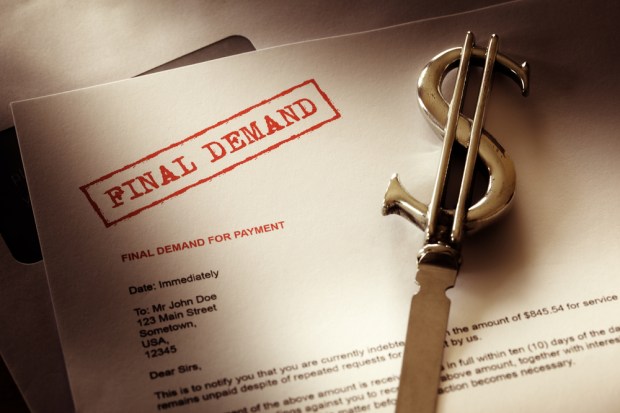Debt Collection, Made Easier And … Gentler?

Debt may be among the most four letter of the four-letter words when payback goes awry. And against the burden of interest — and in the interest of survival — the latter may win out when consumers must choose. Could be, though, that the spiral becomes vicious in a debt collection process that is not known to be kind or gentle.
In an interview with PYMNTS’ Karen Webster, Ohad Samet, founder and CEO of TrueAccord, stated that technology can act as a salve for helping consumers get on their feet and for debtors as they attempt to get paid.
Data Point One: 77 Million. This is the number of consumers in the United States who are in debt collection annually. The profile is of the consumer who gets into trouble — so much so that they cannot actually pay back what they have borrowed. Said Samet, “A lot of people who are not in debt collection view those who are as one of two things: They have money and just need a reminder, and they will indeed pay; or they are tantamount to deadbeats, as in people who do not want to pay, and who are morally bankrupt.”
The reality, said the executive, is that neither perception is correct. These are people, said Samet, where “life just happens to them.” They may have experienced a job loss, a medical condition, and they need “help getting out of debt that is affordable.”
Queried by Webster as to how technology can help them climb out of debt, Samet noted that “many people have some level of income. They want to pay their debt”; the debt is not insurmountable “if only they would get the right payment terms.”
For the debt collection agencies, said Samet, the cost structure is heavily “human based,” so they have levied additional charges, such as convenience fees, for paying with a debit card, for example, or timing factors that do not let people pay when they have money, which “is just creating additional financial distress … it pushes people off the proverbial cliff of bankruptcy.”
But technology, he said, can work at scale, can communicate with every consumer and has a lower cost base — and, in addition, it can be tailored to adjust to that person’s own cash flow.
Data Point Number Two: $779 Billion.
This is the amount of credit card debt that is carried by American consumers in total. This is about 31.8 percent of all household debt, noted Webster. And, said Samet, guidance from banks has shown that defaults are on the rise, pointing specifically to Synchrony Bank and Capital One and Discover. Banks are also projecting higher losses, and this will likely translate into increased business for TrueAccord, said Samet.
Data Point Number Three: $5,700.
This is the average American household debt. But, as Samet stated, his own firm sees the point of consumer contact coming when they simply cannot meet their debt responsibilities, with payments at an unsustainably high percentage of income. And against that $5,700 average, said Samet, even $1,000 can be too much to pay, so these individuals find themselves in debt collection more often, especially for subprime and near prime consumers.
But conversely, TrueAccord often sees families with incomes of $50,000 to $70,000 annually with reasonable FICO scores taking consolidation loans on credit card debt and other debt. They may have flocked to online lenders — who, as is well-known, are also seeing defaults rising.
Many people do not reach out for help because they feel the debt collector does not have their best interests in mind, said Samet, “and a lot of times they are correct.” But technology tailored to the consumer, said Samet, allows debt and collection efforts (which along traditional routes may only recover pennies on the dollar) to stay “top of mind,” with recovery significantly higher.
As for TrueAccord itself, when asked by Webster about the relationships consumers have with debt (and credit in general) after working with the firm, the CEO said the company’s efforts include helping individuals find work, for example. Samet stated that the goal over the next five to 10 years is that the firm wants to be the “platform of choice for financial rehabilitation. Which means that not only do we help you pay your debt that is in front of you and is now on our platform, but also we help you end up in a place that is better financially.”
